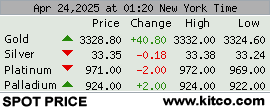Our McAlpine Mill, near Cobalt Ontario, offers unique capabilities for extracting and recovering precious metals from a variety of mining processes.
Custom Milling Process
SMC (Canada) Ltd. operates a 200 ton per day Gravity/Floatation circuit complete with an approved (C of A) tailings basin storage facility. The plant was commissioned and production started in September of 1998 under the name of SMC (Canada) Ltd.
In June of 1999, a smaller mineral circuit capable of processing some 20-25 tons was constructed and this No. 2 Circuit was commissioned in the fall of 1999. This No. 2 Circuit gave SMC (Canada) Ltd. the processing capability of smaller but higher grade tonnages .
To summarize, the SMC Canada operations consist of three Gravity / Floatation Circuits:
- 200 tons per day Precious and Base Metal Circuit
- 20 - 25 tons per day Precious and Base Metal Circuit
- 5 - 7 tons per day Precious and Base Metal Circuit
The Precious Metal Recovery Process at SMC (Canada) Ltd.
Crushing
The slag/refractory brick once delivered to the Plant is stored in an Ore Shelter until it is loaded into a 75 ton coarse ore bin equipped with a grizzly to avoid any oversize material. A Utah Magnetic Feeder supplies a Hatfield 24” x 36” jaw crusher set at 1 ½ inches. The crushed material is conveyed to a double deck Dillon screen which is in close circuit with a four foot Nordberg short head cone crusher set at 3/8 inches. This crushed product reports to a 50 ton fine ore bin.
Grinding
Crushed ore to 3/8” is conveyed to a 5’ x 8’ Marcy Ball Mill at a rate of 22-25 tons per day and is in a closed circuit with two cyclones for classification. The cyclone overflow has a vortex 3” in diameter creating a ground slag product passing 80% - 200 mesh.
The cyclone under flow slurry is a much coarser product and is pumped to a secondary cyclone for dewatering from where the cyclone overflow reports to a 6’ x 18 Holman concentrating table and the underflow reports back to the Ball Mill for further grinding.
The Holman concentrating table creates basically three products:
1) Concentrate
2) Middlings
3) Tails
The Holman concentrate table is an effective piece of equipment in our processing plant. The ratio of concentration is somewhere in the range of 6 to 1. This ratio however varies from customer to customer but generally over 50% of the precious metals are recovered in this initial step. The concentrate and middlings are retained in a secured area. The table tails report back to the Ball Mill for further size reduction. As previously discussed, the #1 cyclone produces a product size of 80% - 200 mesh and reports to a 15 foot dewatering thickener.
Thickening and Floatation
Feed reporting from the #1 cyclone to the thickener is funneled at 15 to 20% solids and at a size fraction of 80% passing 200 mesh. This product requires dewatering before it is transferred or pumped to a bank of floatation cells prior to the removal of the remaining precious metals. The slurry once settled in the thickener is pumped at 35 - 40% solids to a conditioning tank in preparation for Floatation. The thickener overflow water is recycled back to the grinding circuit.
The conditioning tank or sometimes called a primary mixing tank contains 35 - 40% solids and is agitated with Potassium Amyl Xanthate and introduced to a bank of floatation cells from where a frothing reagent is introduced. The most frequent carrier metal that refineries commonly use today is copper or iron. The Potassium Amyl Xanthate reagent is a common collector often utilized in the mineral processing industry and in conjunction with a good quality frother does an excellent job in the floatation of precious metals that are tied up in a copper matrix. Precious metals locked in an iron matrix are removed with magnetic separators prior to floatation. The floatation concentrates are removed from the cells and are filtered, dried, weighed and shipped for further refining.
Concentrate products produced at SMC (Canada) Ltd.
Generally there are three different products produced:
1) Table concentrate
2) Floatation concentrate
3) Mag (Magnetic) concentrate
The products produced can either be returned to the customer or to Sabin Metal for further refining. Once refined at the Sabin Metal refinery the metals recovered can be:
1) stored in a pool account
2) returned to the customer
3) sold on the metals exchange
